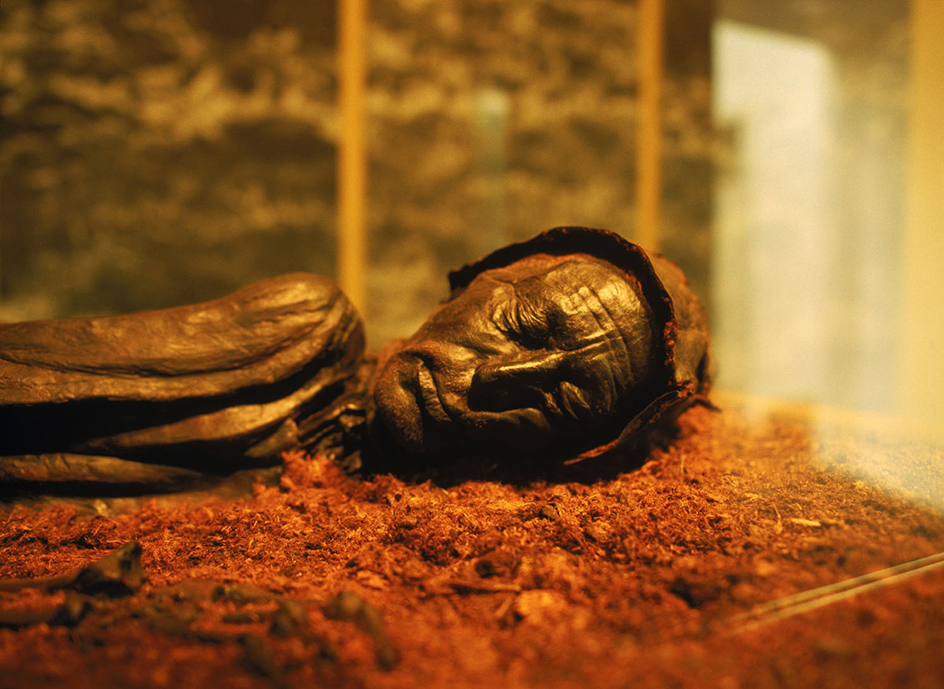Tollund Man is the name given to a preserved human corpse, called a bog body, discovered in a peat bog near Silkeborg (west of Århus), Denmark, in 1950. A peat bog is a wetland in which the soil consists primarily of peat, partially decayed mosses and other plant matter. Soil and water conditions in a peat bog greatly slow the decay of organic (biological) matter. Two men from the small village of Tollund discovered the body when harvesting peat for fuel. Tollund Man is one of the most complete and well-preserved bog bodies ever found.

Archaeologists determined that Tollund Man was an adult between 30 and 40 years of age who lived and died about 2,400 years ago, during the early Iron Age in Europe. By the time he was discovered, nearly all of Tollund Man’s body was still intact, including skin, hair, toenails, and even a leather cap and belt. His stomach contents showed he ate a last meal of porridge made with grain and seeds. His hair was cut short and he was dressed in a pointed sheepskin cap with a leather belt around his waist. Any other clothing he may have worn was not preserved. Tollund Man’s head and face are remarkably well preserved. His face has a serene expression, with closed eyes and mouth, as if he were sleeping.
A length of braided leather rope was found wrapped around Tollund Man’s neck and coiled beneath his body. The rope left a furrow in the skin on the sides of his neck and under his chin. Scientists determined that he died by hanging. They believe he may have been a criminal who was executed. However, some scholars believe he died as a human sacrifice. They point out that Iron Age societies in Europe typically cremated their dead. But those who were sacrificed to the gods were hanged and buried in bogs. Tollund Man’s restored body is on display at the Silkeborg Museum.
